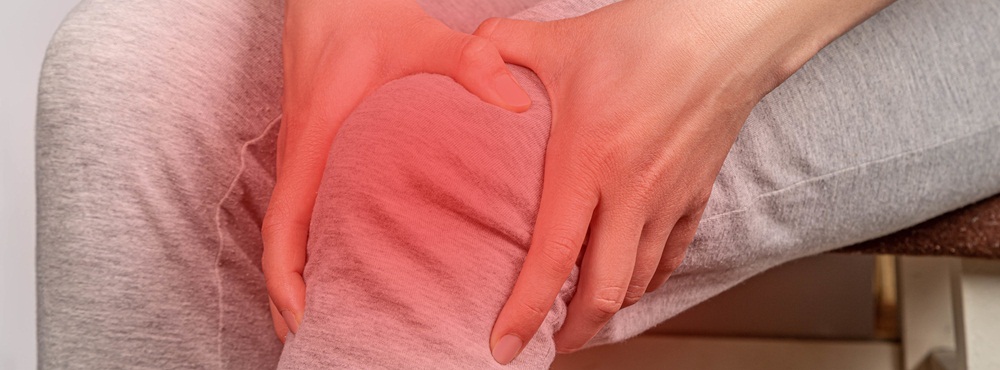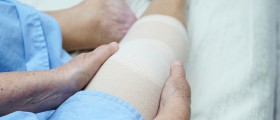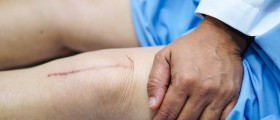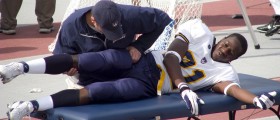Information on Knee Pain
Human knee is a joint which can get rather vulnerable in certain situations. It takes a lot of stress and carries the full weight of the human body. There are numerous different causes of knee pain.
Knee consists of patellofemoral joint and the tibiofemoral joint. Patella and patellar tendon are position over the knee in the so called sesamoid joint. The patella is supported by the medial retinaculum.
Stability of the tibiofemoral joint is provided by anterior cruciate ligament, posterior cruciate ligament, medial collateral ligament, lateral collateral ligament and the menisci. Numerous acute knee injuries like meniscal injuries, collateral ligament injuries, cruciate ligament injuries, fractures, dislocations, patellar tendon ruptures, and certain others can be the cause of knee pain.

Knee pain can be divided into different categories as well and those are global, anterior, medial, lateral and posterior knee pain.
Causes of Knee Pain
Global pain can be caused by the primary arthritis in the knee. Primary arthritis in the knee can be associated with osteoarthritis, rheumatoid arthritis and certain crystal arthropaties. Seronegative arthropaties may or may not include ankylosing spondylitis, juvenile idiopathic arthritis, Reiter’s syndrome, Behcet’s syndrome, psoriatic arthritis and enteropathic arthritis. There are also certain types of infective causes that may be the factors that trigger knee pain.
- One of the primary obstacles facing personalized medicine is the heterogeneity of BD patients. Serious organ involvement such as ocular and vascular lesions in young men, genital ulcers in young women, and GI symptoms in pediatric patients have been reported. Geographic and genetic disease variations are other features of BD, including distinct clinical manifestations in countries with prevalent disease.
- A total of 657 patients registered in the Yokohama City University (YCU) regional BD registry between 1990 and 2018, as well as 6754 patients who were initially registered in the Japanese Ministry of Health, Labour and Welfare (MHLW) database between 2003 and 2014, were investigated.
- The YCU registry data regarding the clinical manifestations of BD, human leukocyte antigen (HLA) status, treatments, and hospitalizations were analyzed first, followed by similar analyses of the MHLW for validation. A hierarchical cluster analysis was independently performed in both patient groups.
- Individual counterparts of the YCU clusters were confirmed in the MHLW registry. Recent phenotypical evolutions of BD in Japan, such as increased gastrointestinal (GI) involvement, reduced complete type according to the Japan Criteria, and reduced HLA-B51 positivity were associated with chronologically changing proportions of the clinical clusters. Conclusions
- To establish precision medicine, it is important to focus more on genetic contributions rather than environmental factors.
- There is accumulating evidence that clinical presentations of BD are different among ethnic groups, suggesting that each ethnic has a different clustering pattern. The acne-arthritis-enthesitis cluster in Turkey, which likely belongs on the spectrum of seronegative spondyloarthritis, was not apparent in our population, though the clinical manifestations were not sufficiently assessed for comparison.
Those usually include septic arthritis and osteomyelitis. There are also certain rare medical conditions and diseases which may be causing knee pain. Those may or may not include familial Mediterranean fever, spontaneous haemarthrosis, rheumatic fever and hemochromatosis. Osteosarcoma is a disease that affects the bone that surrounds the knee and it can also be one of the triggering factors of knee pain.
Anterior knee pain is commonly triggered by certain types of medical conditions such as patellofemoral syndrome, patellofemoral instability, patellar tendinopathy and fat pad impingement. Other causes of anterior knee pain may include pain referred from the hip, patella stress fracture, slipped upper femoral epiphysis, tumors, bursitis and certain other types of diseases. The common causes of lateral knee pain may include lateral meniscus problem and illotibial band friction syndrome.
Other causes of lateral knee pain may include nerve injuries, osteoarthritis, slipped epiphysis and certain other types of diseases and ailments. Medial knee pain is commonly caused by medial meniscus problem or patellofemoral syndrome but it can also be triggered by tumors, slipped epiphysis, ligament injuries and various other types of ailments.
Posterior knee pain can be caused by knee joint effusion, baker’s cyst, thrombosis, ligament injuries and some other medical conditions. Diagnosis and treatment usually include arthroscopy.
- www.nhs.uk/conditions/knee-pain/
- www.nhs.uk/conditions/joint-pain/
- Photo courtesy of Marco Verch Professional Photographer via: foto.wuestenigel.com/knee-pain-leg-pain-concept/

















Your thoughts on this
Loading...